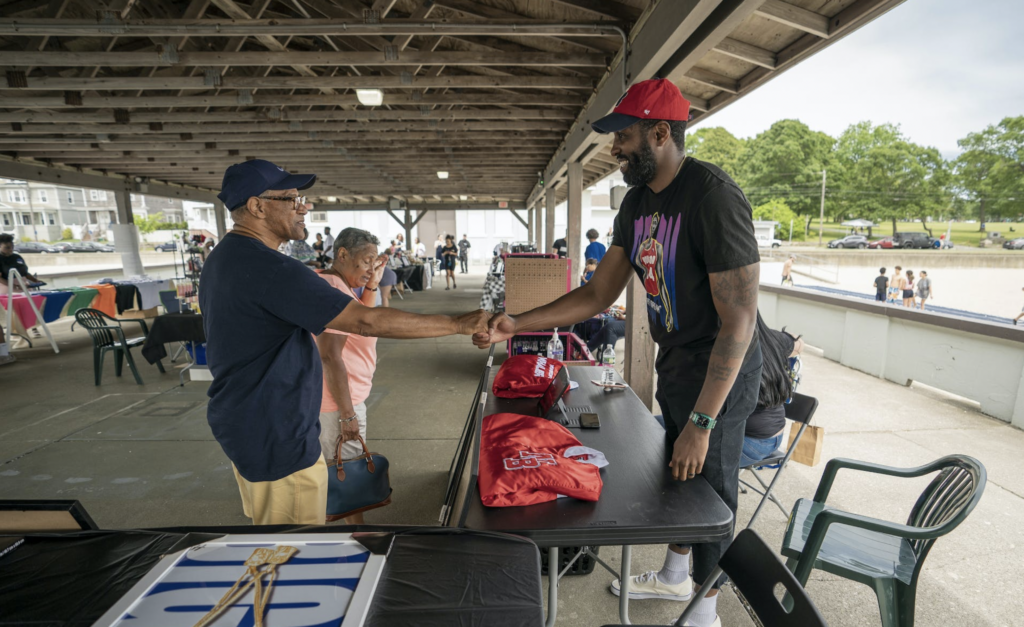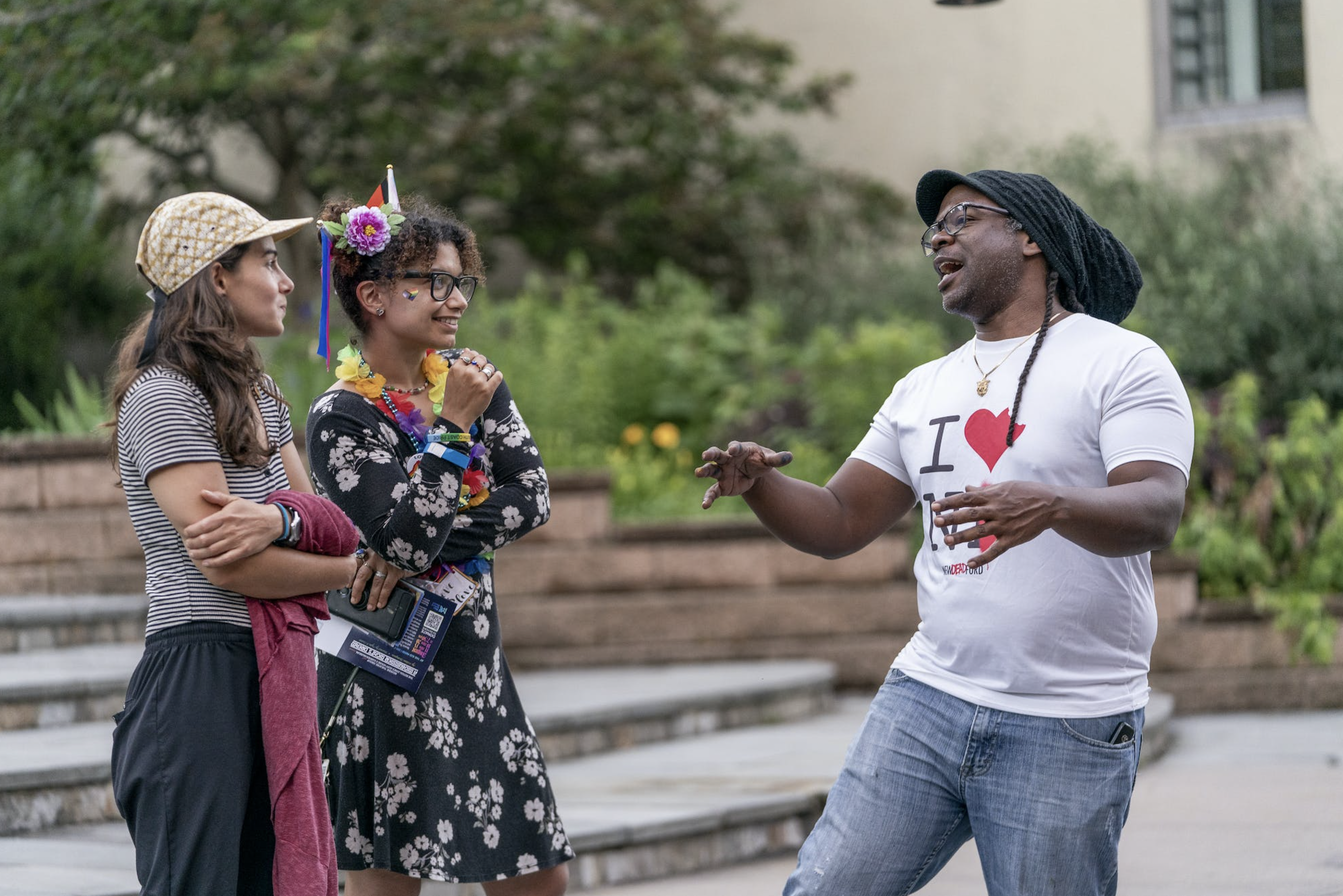Empathy invites us to be in the shoes of others and to witness the world from their point of view. It is the heart of Human Centered Design, a proven approach to problem-solving, developing new products, programs, ideas or strategy rooted deeply in customer wants and needs, and a mindset that fuels meaningful innovation. When we practice empathy with intention, we can more deeply understand our audiences as whole people, and the choices they make. We also become better equipped to deliver messages, services and experiences with greater relevance and meaning for our audiences—helping to build enduring relationships, drive growth, deepen engagement and boost revenue for our organization.
In this new tool, Empathy for Understanding, we offer a qualitative research approach to complement surveys and other quantitative data. This approach emphasizes one-on-one conversations with deep and focused follow-up inquiry that a group setting may not allow. It’s as much about the mindset, curiosity, and openness of the interviewer as the point of view of the interviewee. Empathy for Understanding is designed for marketers, communicators, outreach managers, fundraisers, programming teams and other team leaders who want to understand target audiences more deeply to create greater mission impact. With this tool, you’ll learn how to:
- Adopt a beginner’s mindset
- Prepare for and conduct one-on-one empathy interviews
- Synthesize what you learn to benefit your whole team
- Create an empathy map
- Translate new insight into action
Why Focus on Empathy?
There’s always more than meets the eye. Empathy helps us uncover more about the people in our audiences and communities so we can deliver meaningful value for them to drive our mission forward.
Empathy invites us to witness the world from the perspective of others. When we practice empathy with intention, we can more deeply understand people’s thoughts, emotions, and motivations, as well as the choices they make and behaviors they engage in. With this kind of understanding, we’re better equipped to deliver messages, services and experiences with greater relevance and meaning—helping to build enduring relationships, drive growth, deepen engagement and boost revenue for our organization.
Like every great journey, empathy begins with curiosity and wonder. When we open ourselves up to look beyond what we already know (or think we know), we uncover great treasure to catalyze unlimited possibilities for our organization.
Adopting a Beginner’s Mindset
The best way to get to know someone is to be curious and fully open to whatever they have to say (and how they say it).
We all carry our own experiences, understanding and expertise—traits that are very valuable in contributing to our work. These traits also bring with them personal beliefs and other assumptions rooted in our own lived experience. Our preconceptions may limit our ability to build true empathy.
To open ourselves to learning about people in deeper, more meaningful ways, we first need to let go of our existing notions about how the world works, or how others see and experience the world.
We can do this by adopting a beginner’s mindset.
A beginner’s mindset is being curious about everything as if we’re learning it for the first time. A beginner’s mindset helps us steer clear of our own biases and allows us to get to know someone with fresh eyes. Here are a few tips for adopting a beginner’s mindset:
-
Observe without judgement or response.
As you observe and engage people, withhold any value judgments about their actions, circumstances, decisions, choices or perspectives. Resist the temptation to share your own point of view.
-
Listen deeply.
Let the scene and the conversation soak into your psyche. Absorb what people say to you, and how they say it, without thinking about how you’re going to respond. An extra moment of silence often leads to deeper sharing and discovery.
-
Be curious.
Assume a posture of wonder and curiosity, even in circumstances that may seem familiar or that may feel uncomfortable. Question everything! Even—and especially—the things you think you already understand. Ask questions, and follow-up questions, to learn about the world from the user’s perspective. Remember, there’s always more than meets the eye!
Pro Tip: Adopting a Beginner’s Mindset
Adopting a beginner’s mindset is a practice you can use anytime to learn more, understand people better and uncover new ways of thinking. Being curious and putting aside biases helps facilitate genuine and empathetic conversations.

Putting Empathy Into Action
With your beginner’s mindset at the ready, it’s time to meet with people in your audiences, conduct interviews and summarize what you learned so you can translate that insight into action.
Prepare for, conduct and summarize your interviews with this step-by-step how-to guide.
Prepare
Time with people in your audience is valuable and you’ll want to make the most of it. Here are five steps to help you get ready for your interviews.
-
Start with the end in mind.
What are some of the organizational (or team) objectives you are trying to achieve? Ground your efforts in specific goals so you leave your interviews with relevant insight.
-
Identify the right people to interview.
Invite people most relevant for the goals you’ve outlined (e.g. visitors, donors, community partners). Interview people from both your core and growth target audiences. Interview at least 3-5 people from each target audience segment so you can identify key themes and patterns representative of the whole segment.
-
Brainstorm questions.
Write down a range of potential questions. If creating questions as a team, build on each other’s ideas to flesh out meaningful subject areas. Draft questions that start with “why?” and “could you tell me about the last time you _______?” Include questions about how the person FEELS. Create open-ended questions to allow for stories and unexpected insight.
-
Cluster questions by theme.
Identify themes or subject areas into which most questions fall. Then, determine the order of questions that will help the conversation to flow smoothly and naturally.
-
Refine questions.
Once you’ve grouped your questions, identify outliers, omit them, then look for redundancies, and select one version of each. Keep in mind: you won’t necessarily get to all the questions you prepare, and that’s ok. It’s better to have an extra question or two, than to end up a question or two short. Plus, you’ll want to allow time for follow-up questions in the moment. A good rule of thumb is to anticipate time for about 5-6 questions for a 30-minute interview.
Optionally, you may choose to offer people who join you for interviews a token of appreciation (e.g. free entrance to an exhibit or event, a logo t-shirt, etc.) in addition to your heartfelt personal thanks. Decide in advance so you can prep enough for everyone who participates.
Pro Tip: Don’t Go Solo!
If possible, enlist a partner to join you for the interview (whether in person, online or by phone) to capture notes, quotes, behaviors, stories and other observations, such as emotions or tone of voice. This will allow you to focus more completely on being mentally present during the interview.

Observe + Interview
Whenever possible, before you begin your interview, look for an opportunity to immerse yourself in the environment of your customer to observe things that help you see and experience the world as they do.
Conversation tips:
- Make it feel like a conversation, not an interview.
- Embrace your “beginner’s mindset;” be genuinely curious and listen as if you’re hearing everything for the first time.
- Ask follow-up questions that help you understand why they chose to tell a particular story, or how a specific experience made them feel, even if you think you know the answer. People’s answers will sometimes surprise you!
- Embrace moments of silence. When you allow for some silence, a person can reflect on what s/he’s just said and may reveal something deeper, which opens up a new avenue for exploration.
- Look for inconsistencies and things that are surprising. Sometimes what people say and what they do are different. These inconsistencies often reveal interesting insights.
- Thank the person who generously shared their time, stories and feelings. Let them know how you might be using the input and present them with a token of appreciation if you have prepared to do that.
Things to notice during the interviews:
- What your interviewee says (words or expressions)
- What they do (actions or behaviors)
- What they think (beliefs or motivations)
- What they feel (emotions or desires)
Try this Empathy Interview Notes Template to help capture notes and observations during the interview.
Pro Tip: Pay Attention to Detail
During your interview, engage all available senses. Pay attention to what you see, hear, and feel. If you’re not in the room together, you may also learn more by asking the person about where they are during your interview, and why they chose that space.

Summarize
Following your empathy interviews, plan time to regroup with your interview partner (if you had one), and any other team members who conducted interviews, to share what you’ve seen, heard, and learned.
If several people conducted interviews, delegate the role of note taker for this conversation. The note taker can capture answers to these questions by using headlines/key words, placing one headline or a few key words on individual post-it notes.
Questions to summarize what you’ve learned:
- What are some of the most memorable stories from your interviews?
- What were some of the more emotional moments from your interviews?
- What were some of the most surprising things you learned?
- What were some of the nonverbal clues you observed that stood out to you?
- What were the quotes, key words, or noteworthy tidbits you captured in your written notes?
After everyone has had a chance to share stories from the people they interviewed, the note taker can place all post-it notes on the wall. Cluster similar notes to identify themes and patterns. Snap a photo of all the notes on the wall. Summarize the notes in a document to make it easy to share your findings.
Share with your team
With a deeper understanding of your target audience(s), you have unlocked new possibilities for your organization.
Helping your team and others across the organization know your audiences more deeply is a great way to catalyze fresh thinking and the kind of innovative ideas that engage new audiences and engage existing audiences in new ways.
Below are suggestions to help you make the most of your empathy interviews.
- Create an Empathy Map. Share what you’ve learned with your entire team. Invite team members to reflect on how this deeper understanding of your audience members can help them achieve their respective goals.
- Use the new insight you’ve uncovered to expand or enhance audience profiles for each target audience segment.
- Experiment with Point of View Statements to explore how this new insight might lead to new activities, products, services, campaigns or ideas for better serving your audiences.
- With new audience insight in hand and heart, conduct a breakthrough brainstorming session to surface ideas for engaging new audiences or engaging existing audiences in new ways that help you work toward team or organizational goals.
Go Deeper Into Empathy
These tools will help you capture insight and translate it into action.
-
Empathy Interview Note-taking Template
This printable template and this online template are available to help you capture key stories, emotions and insight during the interview.
-
Empathy Mapping Tool
Build your own Empathy Map using this template and set of guidelines to create a well-rounded profile of your audience member. These guidelines include tips for creating empathy maps while working with your team in person, as well as suggestions for online collaboration tools for teams working remotely.
-
Point of View Statements
-
Understanding Empathy
This video illustrates the power of empathy to help see the world through someone else’s eyes, and feel what they feel in their heart of hearts.
